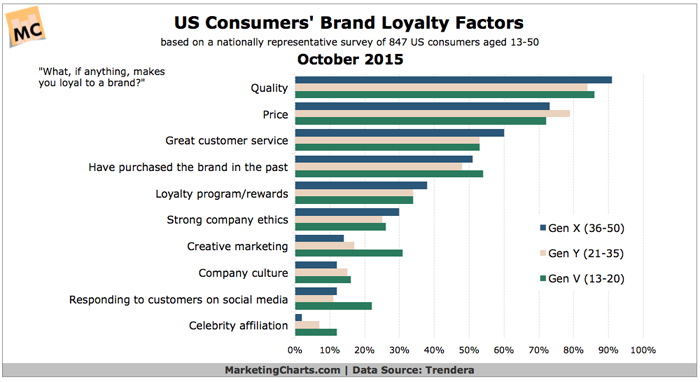Customer experience remains one of most exciting marketing opportunities for every business, regardless of industry. Here are eight things that must be true to fulfill customer expectations every time they do business with you.
Customer Experience: 8 Ways You Could Fail to Meet Customer Expectations
No matter what unique novelty you build into your customer experience marketing strategy, if you fail to deliver when it comes to what the client expects from you in the first place, it might all be for naught. Use this eight point checklist to ensure that you don’t miss the mark with your customers.
Meeting customer expectations is the baseline from which a truly compelling customer experience can be created. But if you don’t know what customers expect to be true each and every time they do business with you, you run the risk of failing to deliver for some customer must-have’s.
A study released by the EIU (Economist Intelligence Unit) called Creating a Seamless Customer Experience reveals the areas that customers say represent the experience they want to have with the brands they do business with. In the study, respondents were asked to select up to three basic customer expectations which they considered most important relative to “the ideal customer experience.”
One note of caution: In this case, “Ideal” is not the ideal.
The word ‘ideal’ has more than one meaning. Most often it’s used to describe something that is perfect, as in: “existing only in the imagination; desirable or perfect but not likely to become reality.” But as it relates to this study, the definition that is more applicable is, “satisfying one’s conception of what is most suitable.” As you think about the customer experience your business provides relative to these eight customer experience baselines, remember that these are elements that customers want to be true of each and every interaction when it comes to the brands they do business with.
You might also like: 3 Ways to Improve the Customer Experience at the Point of Sale
In other words, you’re going to have to do even more to exceed customer expectations. That said, it’s also worth noting that many of your competitors may be missing the mark when it comes to providing an ideal customer experience in one or more of these areas. If your business gets them all right, you could be giving your business a competitive advantage and improving the way customers perceive your brand.

8 Baselines for Simply Meeting – Not Exceeding – Customer Expectations
1. Fast Response Time – 47%
Whether you are being asked to provide information, a quote or proposal, or you must deal with a customer complaint, consumers said that providing a fast response was critical.
2. Simple Buying Process – 47%
Equally important to buyers is that the purchasing process be simple. Our marketing director often paraphrases this concept as “Marketing 101: Make it as easy as possible for the customer to buy.” Any time the customer has to jump through an unnecessary or unexpected hoop, it represents something that might interrupt the buying journey and stop the sale.
3. Knowing Where My Stuff Is – 34%
Whether it’s buying a commodity online or a service that takes months to complete (such as website development), your customer wants to know where their items are in process and when they can expect them. They want to know that their stuff isn’t lost, stolen, or forgotten along the way.
4. Omni-Channel Experience – 25% and 14%
Your customers want your business to “feel” the same whether they are interacting with you in person (or in-store), on your website or blog, one fourth of the consumers surveyed said that clarity and simplicity across channels was important to them, and fourteen percent said that consistency of product information across channels was key to their perceiving a customer experience as ideal.
5. Being There When I Need You – 22% and 14%
Whether it’s having the ability to engage with a brand over multiple channels (in person, by phone, via email, social channels, etc.) or wanting to know they can reach a brand representative at a time most convenient to them, customers want to know that your business will be there when they need you.
6. Giving the People What They Want – 12% and 7%
Buyers increasingly expect that brands will personalize their buying experience, and that means much more than an auto-fill field that inserts their name after the word ‘Dear’ in an email message. Keeping track of customer purchases, preferences, and interests and creating better buyer profiles in the spirit of predictive marketing can help ensure that you don’t waste your customer’s time with irrelevant offers.
7. An On-Going Relationship – 10%
One out of ten survey respondents said that their ideal customer experience included brand engagement after the sale. If you aren’t checking in with customers post-transaction, you run the risk of failing to identify dissatisfaction or giving customers the impression that your business simply doesn’t care about whether they were satisfied with the customer experience. Plus, checking in after the sale is a great way to encourage satisfied customers to leave positive reviews, ratings and testimonials for your business online, and lay the foundation for referrals and repeat business.
8. A Place Where Everybody Knows Your Name – 7%
Fans of the popular sitcom Cheers will instantly recognize this reference to the show’s theme song, referencing the fact that people want to go where everyone knows them (and is glad that they came). In the survey, seven percent of respondents said that their ideal customer experience would include a brand that recognized them (and their preferences) as a customer, regardless of the channel they used to interact with the brand. In addition, seven percent of respondents also said that they expect brand engagements to reflect their preferences and interests as revealed on different channels.


